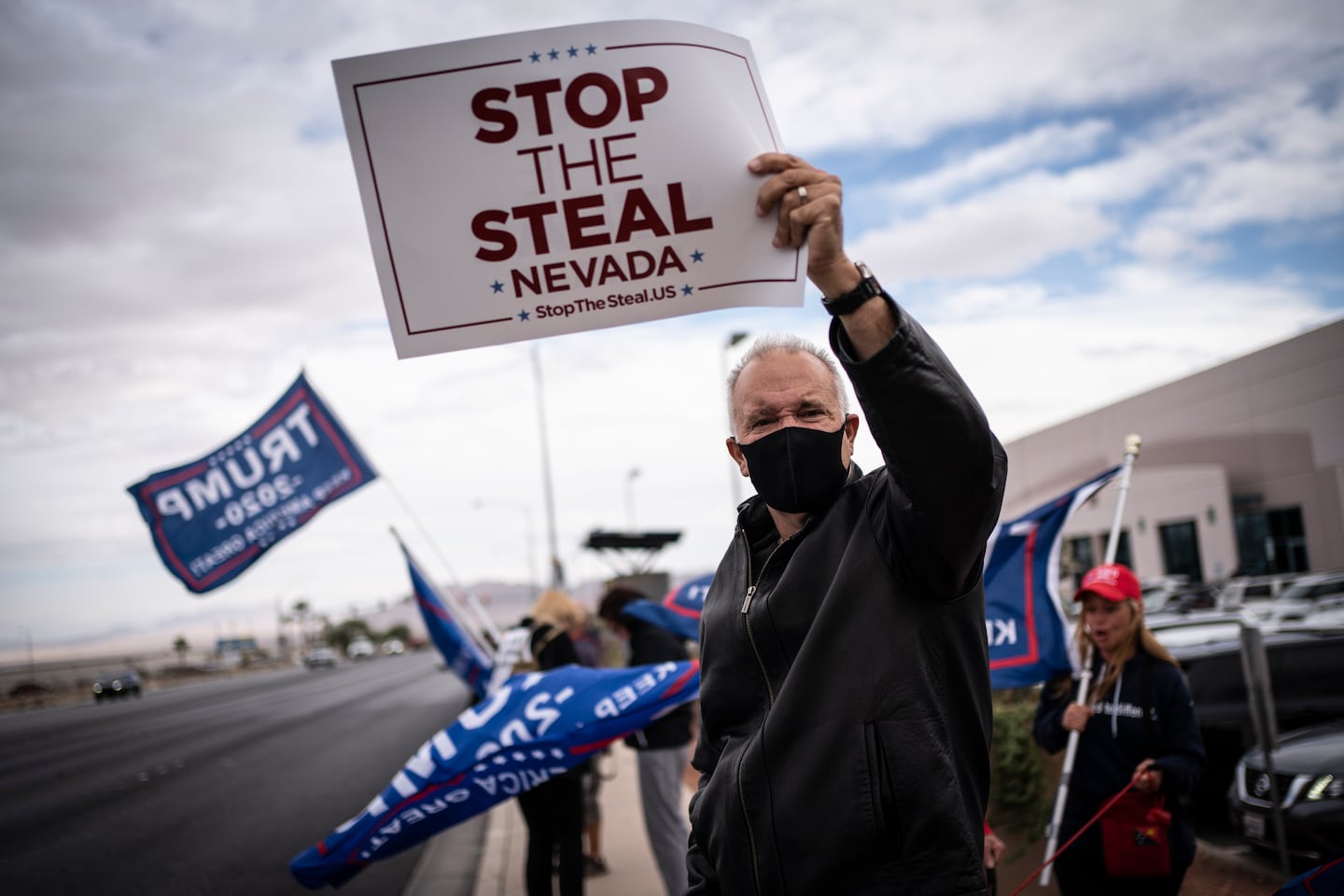Analysis | We have reached the apex of election-fraud debunking

Beyond the lack of proven human involvement, there has been no demonstration of rampant fraudulent voting in any state. There have been plenty of cases of individual fraud, rooted out through the established, successful mechanisms that are in place to catch such illegalities. There are plenty such cases in every national election. What hasn’t emerged is any evidence of hundreds or thousands of votes having been illegally cast in any state.
Nonetheless, millions of people believe that the election was stolen. So how might they be dissuaded? Perhaps a robust articulation of all of the claims about fraud that have been raised to date? A delineation of the dozens of lawsuits filed in the wake of the election and how they were adjudicated? An explanation of specific clusters of claims, such as the “audit” of votes in Arizona?
The source for any such analysis, of course, would need to be some entity of unimpeachable agnosticism toward Trump. A group of Republicans, for example, willing to consider the claims made by Trump and his allies and assess them objectively. Anything less, after all, would be trivial to cast as inherently biased.
On Thursday, an analysis that checked nearly all of those boxes emerged. A group of Republican staffers and officials with robust partisan credentials released a 70-plus-page report walking through precisely the considerations above: the lawsuits, the evidence, the audits. Its conclusion is as unsparing as it is unsurprising.
“For this Report, we examined every count of every case brought in these six battleground states,” its executive summary reads. “We conclude that Donald Trump and his supporters had their day in court and failed to produce substantive evidence to make their case.”
The focus on the lawsuits is important in part because the authors — a group that “has worked in Republican politics, been appointed to office by Republicans, or is otherwise associated with the Party,” the report notes — emphasize the importance of challenging election results in a timely fashion. The campaign tried to do so and was unsuccessful. What’s more, no evidence has emerged since the post-election window of legal challenges to bolster any of the claims the Trump campaign and its allies alleged in court.
“Even now, twenty months after the election, a period in which Trump’s supporters have been energetically scouring every nook and cranny for proof that the election was stolen, they come up empty,” the report notes. “Claims are made, trumpeted in sympathetic media, and accepted as truthful by many patriotic Americans. But on objective examination they have fallen short, every time.”
As they carefully note. State by state, the report presents a claim about how the vote in that place was allegedly corrupted and then explains why it wasn’t or why there’s no reason to believe it was. Arizona. Georgia. Michigan. Nevada. Pennsylvania. Wisconsin. All introduced and all subsequently dispatched with.
Other claims introduced after the 60-plus filed lawsuits were resolved are dismissed more broadly. The claims of “2000 Mules,” for example, are not discussed at length, though the report’s authors note that the film’s assertions have “been thoroughly debunked in analyses” — including at The Washington Post. There is, of course, no evidence to have emerged since President Biden was inaugurated that introduces any reason to doubt that the election was fairly conducted and determined. Most of what has emerged is simply new flavors of the same mush presented in the election’s immediate aftermath.
The authors — including former senator John Danforth (Mo.) and former solicitor general Theodore Olsen — explain why they see their work as important.
“To have 30 percent of the country lack faith in election results based on unsubstantiated claims of a ‘stolen’ election is not sustainable in a democracy, and it discredits the political party making those charges,” they write. “We hope that setting out the full record in this Report will help restore faith in the reliability of our elections.”
It will not, of course.
For one thing, the credentials of the authors are imperfectly Trump-agnostic. Among them are Benjamin Ginsberg and J. Michael Luttig, both of whom testified before the House select committee investigating the Jan. 6 riot at the Capitol. Both are staunchly, impeccably conservative, and both should be considered credible interlocutors on this question. But all that’s needed is a crack through which doubt can be poured, and their willingness to aid the efforts of the hated House committee is a fissure more than wide enough.
That’s the other point, of course. As I’ve noted before, the evidence is not and never has been the point. Those who think the election was stolen will think that no matter what, adding or subtracting whatever “evidence” they want to assert that their belief is justified. It’s the logical approach of the religious zealot, giving primacy to the belief — as articulated by the subject of devotion — and not worrying about what undergirds it.
Put another way, there are zero people who both have considered the available evidence with objectivity and who also believe the election was stolen. Having Danforth sit them down and walk them through everything will have no more effect than my doing so. It will probably have no more effect than if Trump himself were suddenly to recant his past claims; this would simply be chalked up to some ninth-dimension chess play by the former president.
Those who believe Trump’s claims that the election was stolen are participants in a torrid love affair with the idea. There’s no dissuading, no telling them that their partner is toxic, dishonest and deceptive. Over time, one hopes, their feelings will simply fade and, while they’ll always harbor positive feelings toward the idea that election was stolen, they’ll move on. Perhaps even trust another election in the future.
Their parents sitting them down and scolding them, however gently, won’t do the trick.


